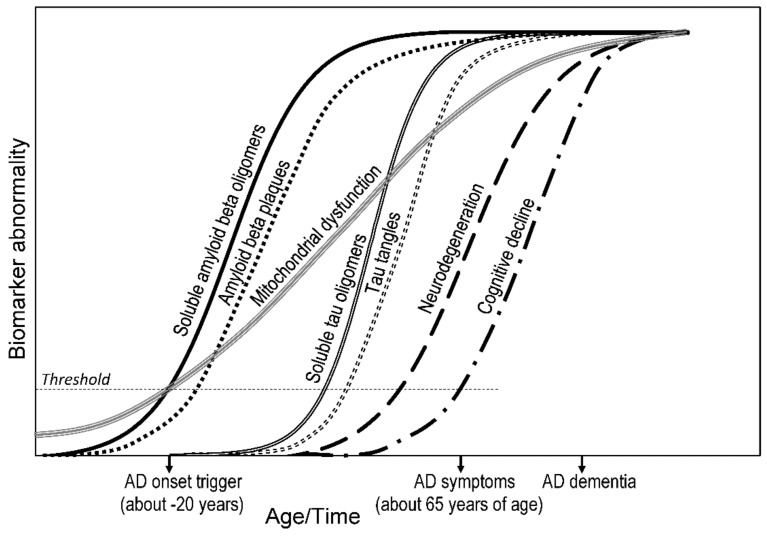Figure 2.
Hypothetical time course of biomarker abnormalities and pathological changes in Alzheimer’s disease (AD) based on (i) measurement of amyloid beta (Aβ) and phosphorylated tau (P-tau) in cerebrospinal fluid and/or brain via PET, (ii) measurement of neurodegeneration via FDG PET and MRI, (iii) assumption of mitochondrial toxicity of both Aβ and tau oligomers and/or mitochondria-induced Aβ or tau pathology, (iv) synaptic dysfunction quantified by FDG-PET and fMRI [95,133], and (v) assumed age-dependent mitochondrial dysfunction. AD symptoms first appear in mid-60s and starting of AD onset can occur more than two decades before that; mitochondrial dysfunction develops gradually in the aging process. Age-dependent threshold crossings of mitochondrial dysfunction, Aβ neurotoxicity, and/or tau neurotoxicity appear to be primary initiator of AD onset, leading to neurodegeneration, symptom onset, and AD dementia. FDG—18F-fluorodeoxyglucose; fMRI—functional magnetic resonance imaging; PET—positron emission tomography.

